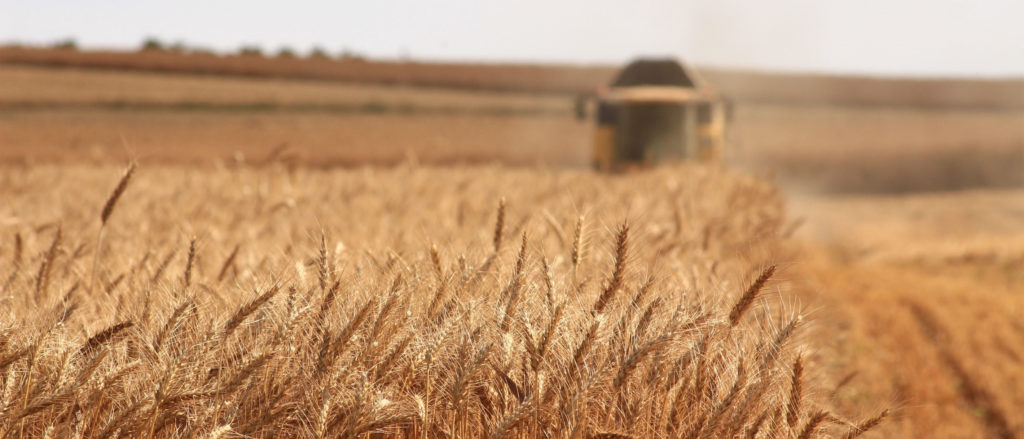RADAR

How Russia-Ukraine conflict could influence Africa’s food supplies
“No man qualifies as a statesman who is entirely ignorant
of the problems of wheat”—Socrates.
BY Wandile Sihlobo, Senior Fellow | Department of Agricultural Economics, Stellenbosch University
WHEAT AND other grains are at the heart of geopolitics following Russia’s invasion of Ukraine. Both countries play a major role in the global agricultural market and there is significant agricultural trade between them and countries in Africa. These imported agricultural products were worth US$4 billion from Russia in 2020—about 90% of this was wheat, and 6% was sunflower oil. Major importing countries were Egypt, which accounted for nearly half of the imports, followed by Sudan, Nigeria, Tanzania, Algeria, Kenya and South Africa.
Similarly, Ukraine exported US$2.9 billion worth of agricultural products to the African continent in 2020. About 48% of this was wheat, 31% maize, and the rest included sunflower oil, barley, and soybeans.
Russia produces about 10% of global wheat while Ukraine yields 4%. Combined, this is nearly the size of the European Union’s total wheat production. The wheat is for domestic consumption and well as export markets. In 2020 Russia accounted for 18% of global wheat exports and Ukraine 8%.
Both countries are also notable producers of maize, responsible together for a combined production of 4% and 14% of global maize exports in 2020. They are also among the leading producers and exporters of sunflower oil. In 2020, Ukraine’s sunflower oil exports accounted for 40% of global exports, with Russia accounting for 18%.
Russia’s military action has caused panic among analysts; conflict has disrupted trade with significant consequences for global food stability, particularly big rises in the price of global grains and oilseed—both key drivers of global food price rises since 2020. These escalations in value were caused primarily by dry weather conditions in South America and Indonesia, which resulted in poor harvests, and a rising demand in China and India.
What to expect
Furthermore, the invasion, in the significant producing region of the Black Sea, would raise global agricultural and food commodity prices, already a factual scenario just days into the conflict. These included maize (21%), wheat (35%), soybeans (20%), and sunflower oil (11%) compared to the corresponding period a year ago. This is noteworthy as 2021 prices were already elevated.
This is a concern for the African continent, which is a net importer of wheat and sunflower oil. There are also worries about drought in some regions of the continent. Disruption to shipments of commodities would add to the general worries of food price inflation in a region that imports wheat.
The scale of the potential upswing in the global grain and oilseed prices will depend on the magnitude of disruption and the length of time that trade will be affected. In January 2022, the FAO Food Price Index averaged 136 points, up by 1% from December 2021—its highest since April 2011. Vegetable oils and dairy products mainly underpinned the increases.
Some countries on the continent, such as South Africa, benefit from exporting fruit to Russia. In 2020 Russia accounted for 7% of South Africa’s citrus exports in value terms and it accounted for 12% of South Africa’s apple and pear exports in the same year—the country’s second largest market.
From Africa’s perspective, Russia and Ukraine’s agricultural imports from the continent are marginal—averaging only US$1.6 billion in the past three years. The dominant products are fruit, tobacco, coffee, and beverages in both countries.
Ripple effects
Every agricultural role-player is keeping an eye on the developments in the Black Sea region. The impact will be felt in other regions, such as the Middle East and Asia, which also import a substantial volume of grain and oilseeds from Ukraine and Russia.
There is still a lot that’s not known about the geopolitical challenges that lie ahead, but for African countries there are reasons to be worried, given their dependency for grain imports. In the near term, countries are likely to see the impact through a surge in prices, rather than an actual shortage of the commodities. A rise in prices will be beneficial for grain and oilseed farmers, but rising commodity prices are bad news for consumers who have already experienced food price rises over the past two years.
| Dates To Remember |
|
April 2 – World Autism Awareness Day 4 – International Day for Mine Awareness and Assistance in Mine Action 6 – International Day of Sport for Development and Peace 7 – International Day of Reflection on the 1994 Genocide in Rwanda 7 – World Health Day 15 – Good Friday 17 – Easter Sunday 21 – World Creativity and Innovation Day 22 – International Mother Earth Day 23 – English & Spanish Language Day 24 – International Day of Multilateralism and Diplomacy for Peace 25 – World Malaria Day 28 – World Day for Safety and Health at Work 30 – Our Lady, Mother of Africa 30 – International Jazz Day May 1 – St Joseph the Worker, Workers’ Day 3 – World Press Freedom Day 8 – Remembrance and Reconciliation for Victims of Second World War 8 – World Migratory Bird Day 15 – International Day of Families 17 – World Telecommunication and Information Society Day 20 – World Bee Day 21 – World Day for Cultural Diversity for Dialogue and Development 22 – International Day for Biological Diversity 29 – Ascension of the Lord 29 – International Day of UN Peacekeepers 30 – World No-Tobacco Day |
